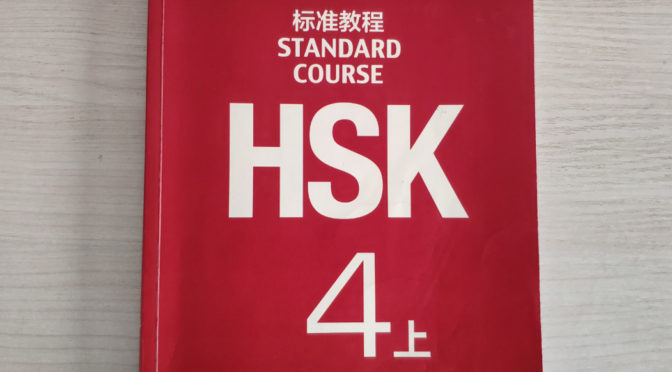Last week I finally finished the HSK 4 上 textbook, both the course book and the workbook, meaning I’ve gone through each of the unit, written out the characters, and completed the practice tests in the workbook. Sadly, the practice tests showed my deficiency in the language as I scored lower and lower on each test. The reason? Although I had written out each of the characters a bunch of times, I neglected to use AnkiDroid or another flashcard app to actually test my ability to recognize the characters and their meanings. So, as I got to the practice tests, I could listen and understand much of it but when I had to choose between the answers, I found I couldn’t understand what the characters meant. Hence, bad scores.
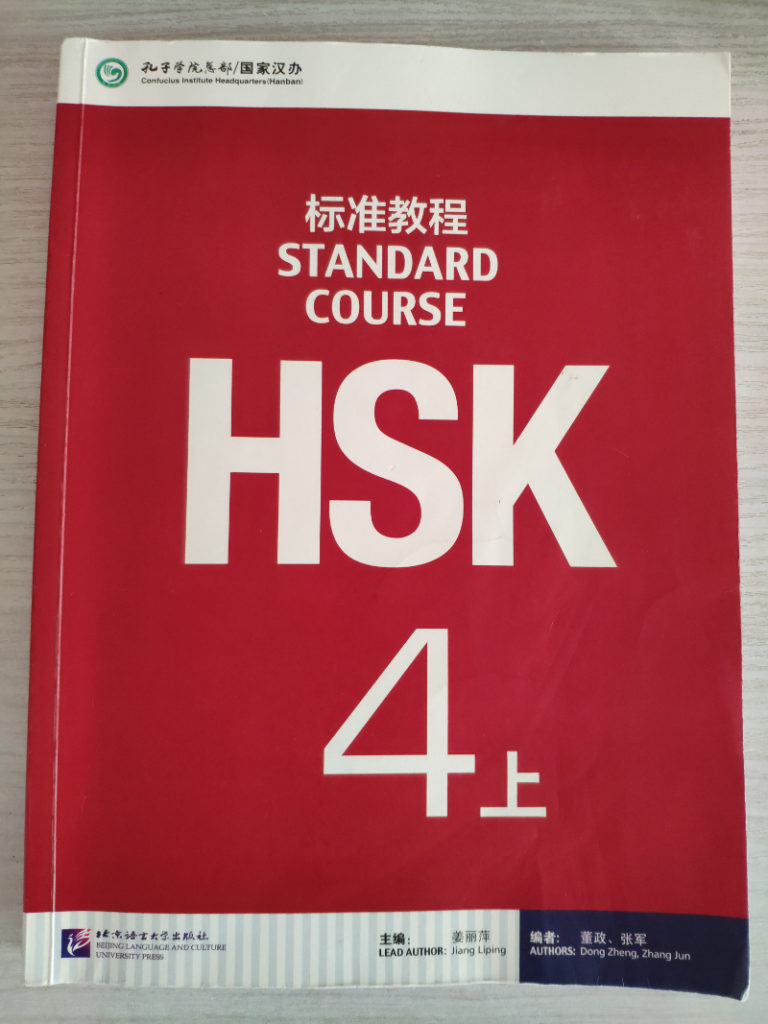
But with the completion of the 上 (shang) book, it now means that my vocabulary should be up around 900 characters. When I review my HSK 3 characters, I find I know most of them already so that’s a plus to my studies.
All told, the HSK 4 上 book took me 79.5 hours. Here’s a look at my November studies:
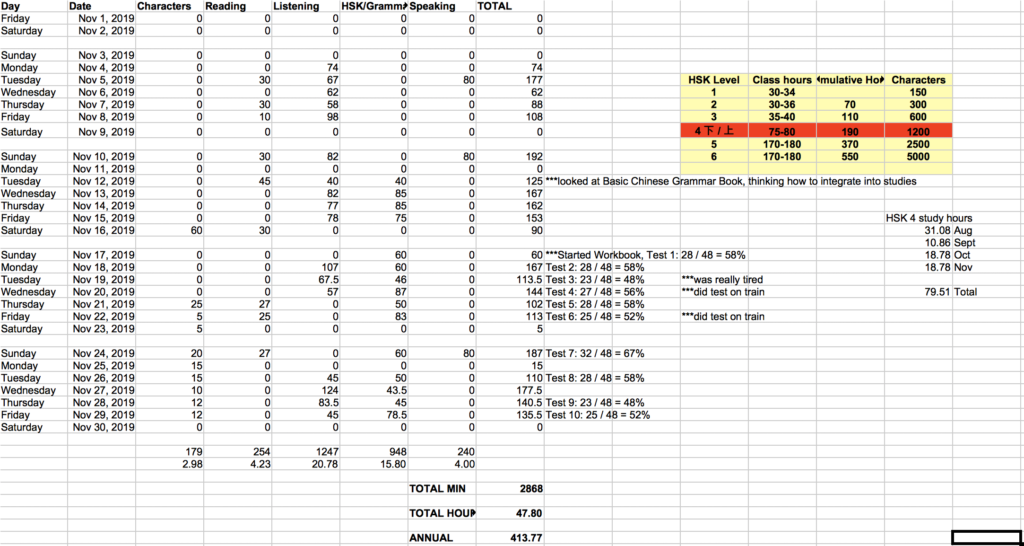
As we hit December, I’m probably as surprised as anyone that this year has gone by so quickly. I look back and recall that it was just over a year ago that I committed myself to learning Mandarin Chinese (which you can read about here) which is a little bit different from other types of Chinese, namely Cantonese, which uses Traditional characters instead of the Simplified characters in use on the mainland. You’ll recall that my goal was to hit HSK 4 or 5 within a year and I did. I’ve gone through HSK 2, HSK 3 and now part of the HSK 4 books, so it has been a busy year.
One of the few notable successes I’ve had as of late is the ability to read the newspaper. You’ll recall that years ago when I first came to China that I had encountered a German professor who said he read newspaper to learn English and I decided to do the same thing with Chinese. It didn’t work out at that time but now, however, on the flight to Lanzhou this past week, I found I could actually sit and read a newspaper, albeit slowly. It took me about half an hour to get through one article but, throughout the time I was reading I was making flash cards for the characters and words that came up most often.
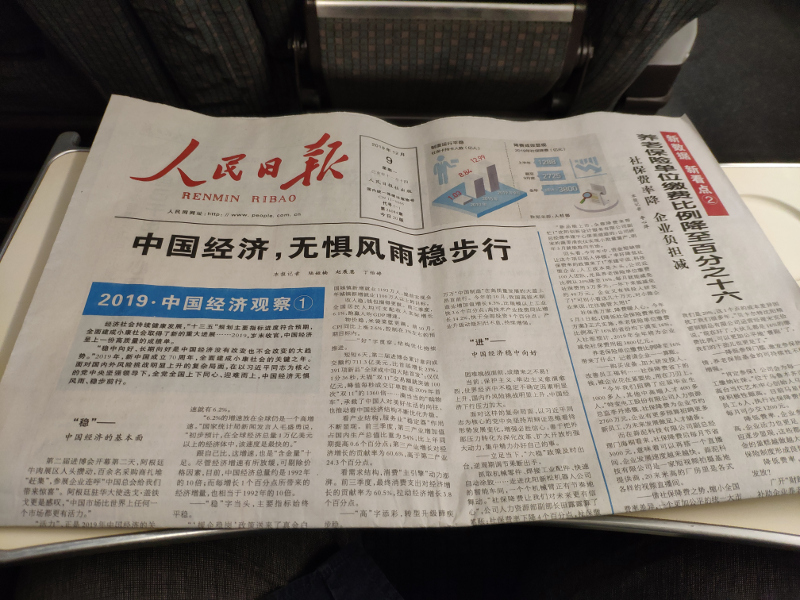

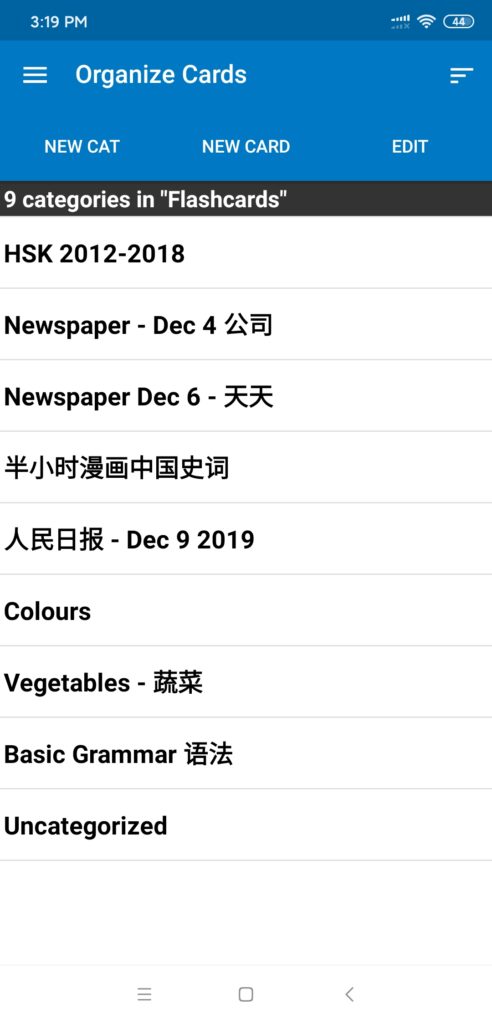
In another success, I also finished my first book in Chinese, albeit an illustrated history of the Warring States period. At 223 pages, it took my about three months and 15 hours to read the whole thing from cover to cover. I learned a bit about Chinese history while also adding to my vocabulary. There are other books in the series and I’m contemplating getting them because of their use both for linguistic and historic purposes.
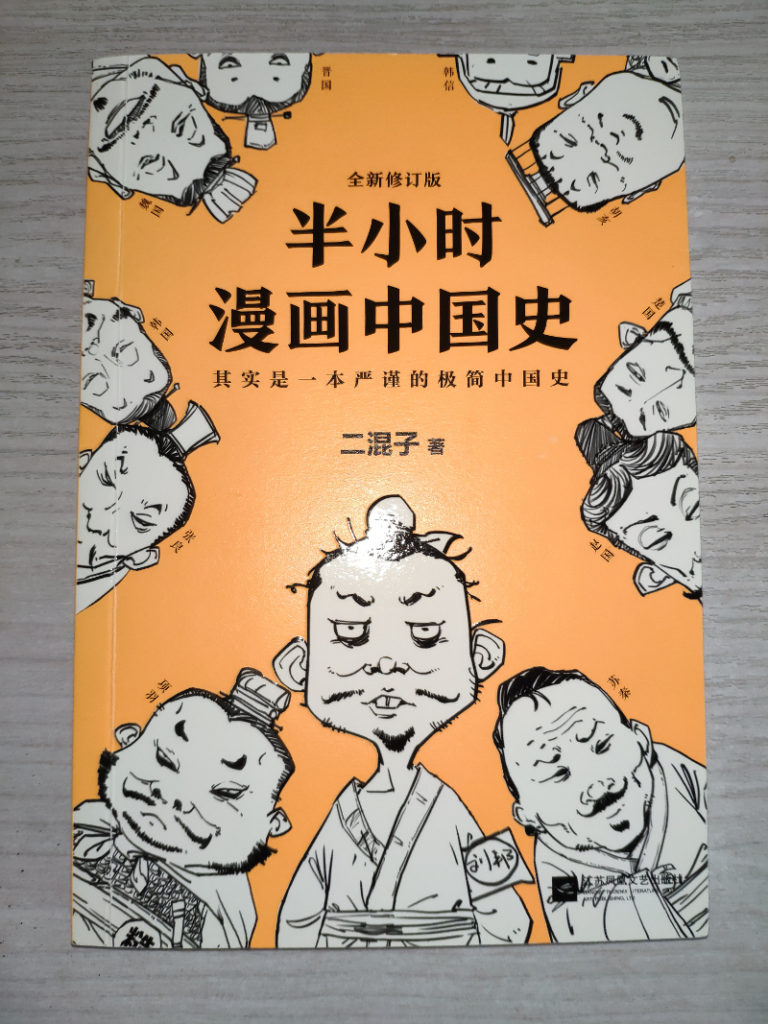
I’ve also found a speaking partner with whom I can meet every now and then. Given that I travel a lot for work it’s not possible to always meet. I was impressed by myself, however, in that I was able to make my way through several meetings and keep the conversation going mostly in Chinese. I do have to be fair and also help her to speak English, so we do switch back and forth. It was these encounters, however, that I noticed that my conversational Chinese wasn’t bad in making myself understood but the problem of vocabulary came up quite a bit. It went back to the fact that I’d studied the characters but not their meanings, and so I was drawing blank on some of the explanations she gave me. This is something I can work on.
The other thing I’ve started working on is focusing my vocabulary on certain topics, something that seems like a blatant thing to do. With that, I’ve started studying the simple things like fruit, vegetables, colours, etc. All of these I’m getting from the Picture Chinese Dictionary I bought years ago. It took that long to get to the point that I became able to look at the word, write it down, and be able to say it and have it stick.
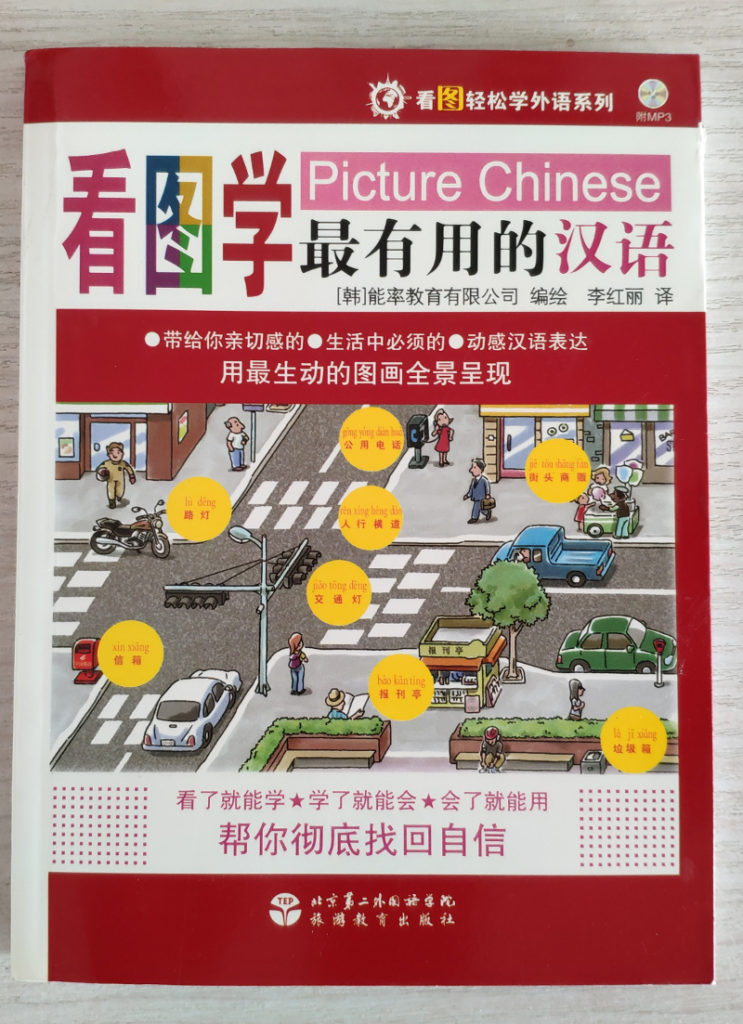
Finally, the last book I’m referencing right now is the Basic Chinese Grammar book by Ying Po-Ching and Don Rimmington, which was sent to me by a colleague. He said that the book helps in understanding the grammar because it goes through each part point by point.
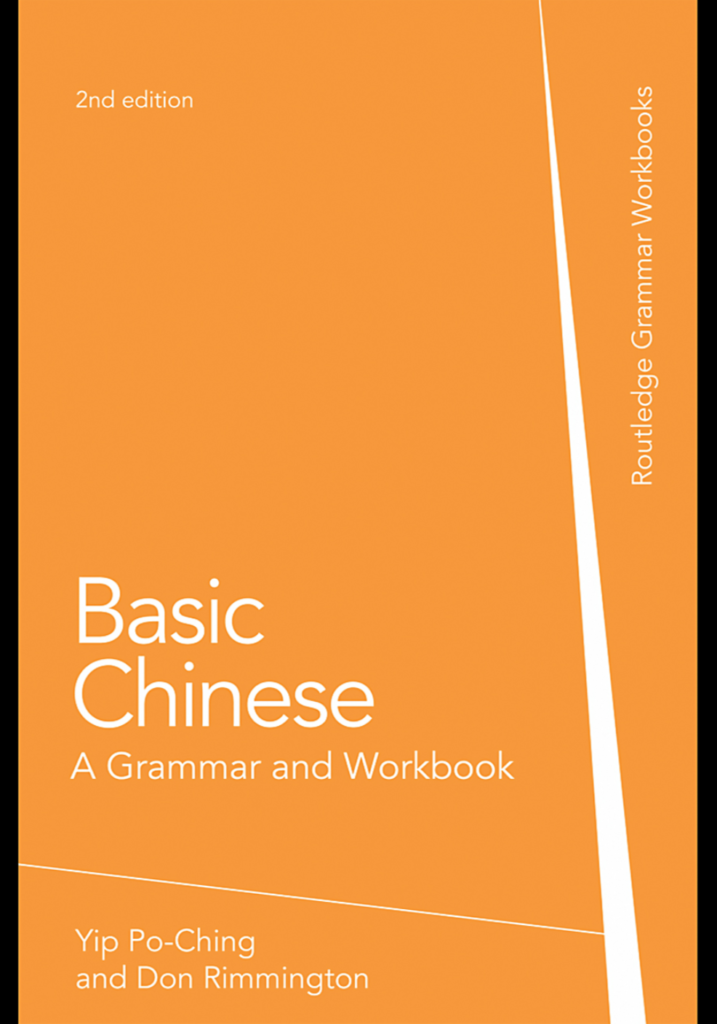
This is not a book I could’ve started right away in my Chinese studies because it is a rather dry read. However, after having struggled with the language for a few years and finding the HSK book explanations complete all but complete garbage, this extra practice helps in at least focusing my efforts on the grammatical points of the Chinese language. Even the chapters that should be simple (nouns, the use of 不 / 没 to negate sentences), have taken me a while to get through. Further, the book is giving me a chance to practice writing out the characters in full sentences rather than just one-by-one. It is my hope that this book will help me in the writing sections of the HSK test.
So what is the HSK 4 test like?
Here is a breakdown of the test itself:
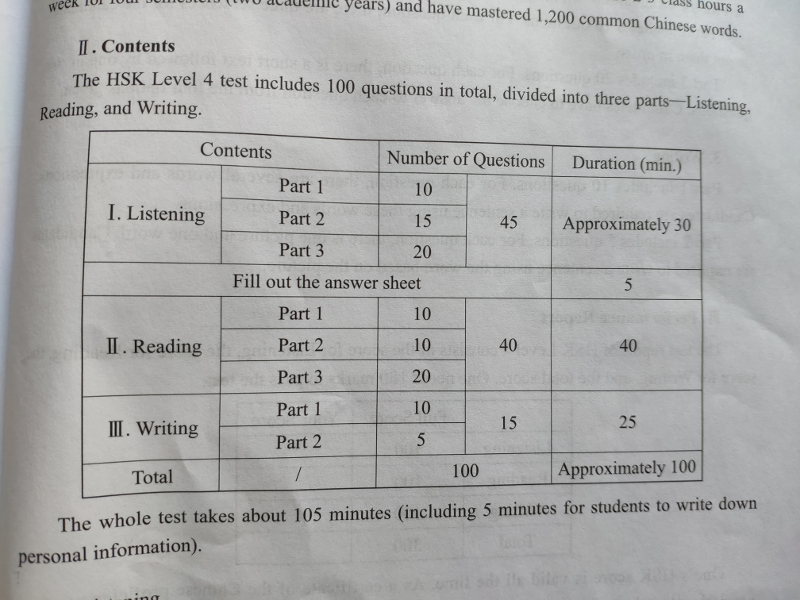
If you recall what the HSK 3 test looked like, much of it is the same. The big differences are that the dialogues are only heard once rather than twice and there is a section in which you have to re-arrange the sentences in the correct order.
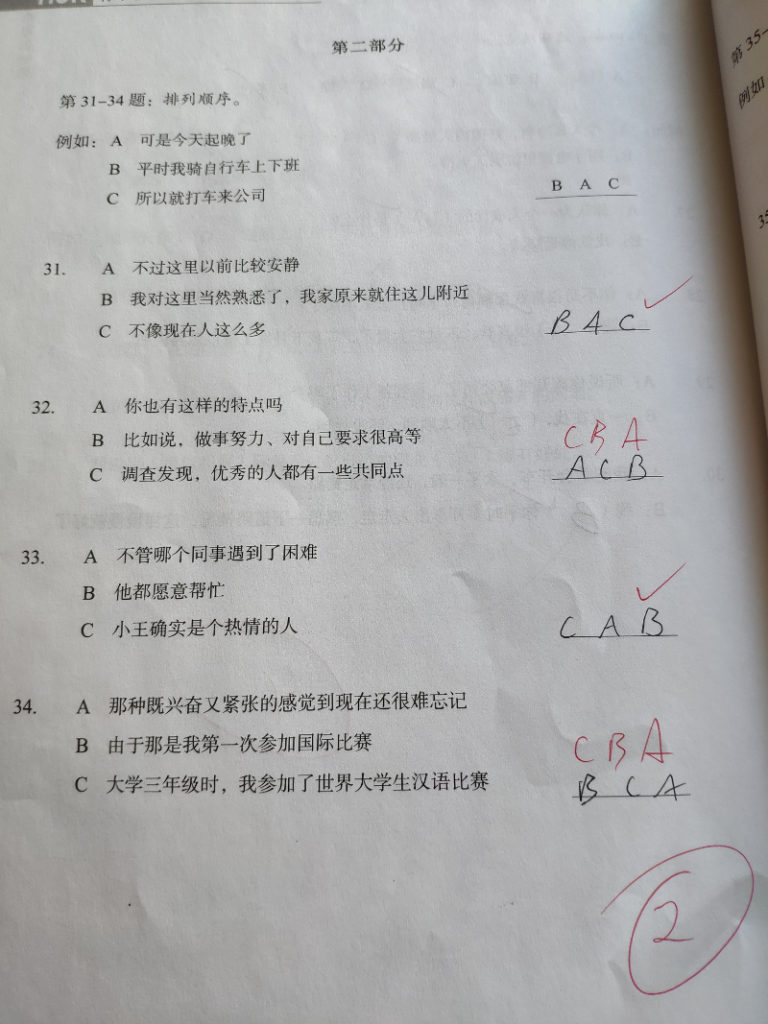
It’s not that easy when you’re guessing what the characters mean and have only a faint clue on Chinese sentence construction.
Finally, the other big difference is that the test closes with two pictures for which you have to write a sentence each. It doesn’t sound difficult and, if the test is computer delivered, it wouldn’t be difficult to come up with something for the pictures. However, if the test is paper-based and requires me to actually write the characters, this would be a bit more of a challenge. I’m not entirely clear on how they score this part of the writing section since there are a few elements that make up any composition: character formation, words used, grammatical construction and punctuation.
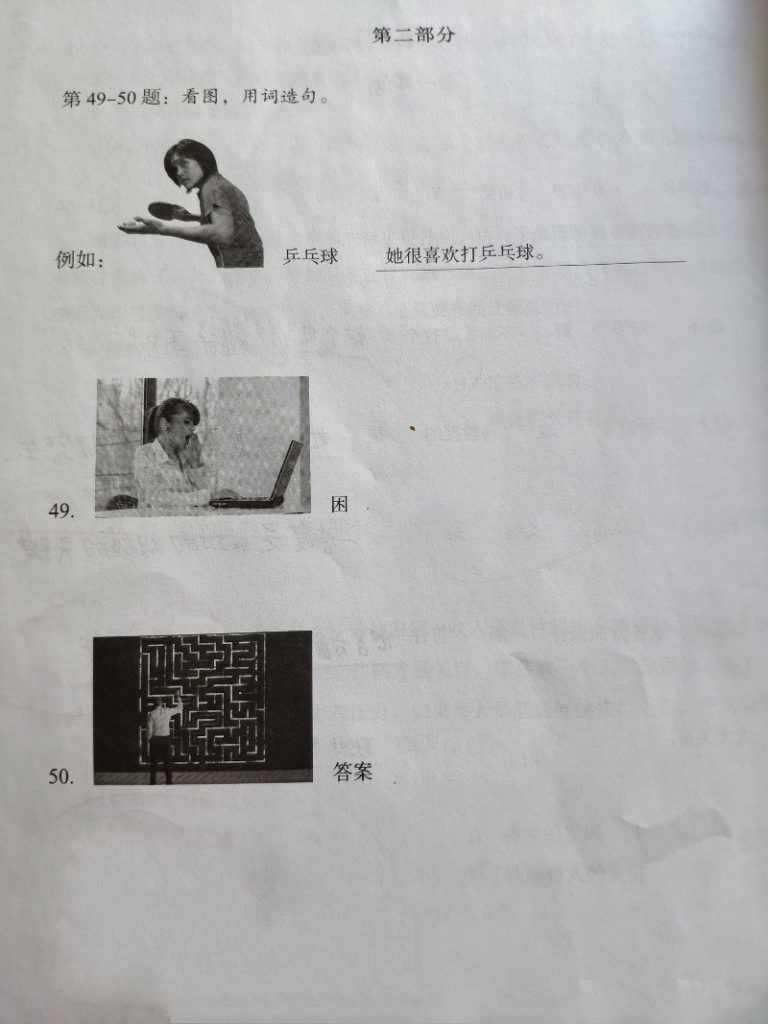
And so, as it stands, I’ll probably buy the next set of HSK 4 (下) books in a week or two and then hopefully get through those in about six weeks. Why so fast? The goal is to work on the other books I mentioned above so that the HSK 4 book is easier to go through. Further, I’ve already begun studying the word definitions so that should also help in getting through the course book and practice tests. After I finish the course and work books, I’ll find another set of practice tests only after which I’ll sign up for the real test. I’m hoping to have this all done by the end of February or the beginning of March.
And with that… 加油!(ง •̀_•́)ง
